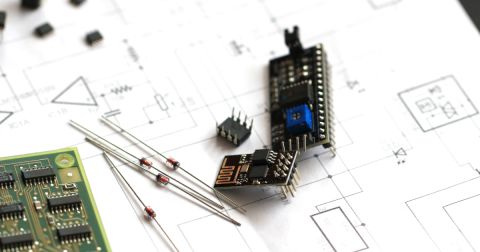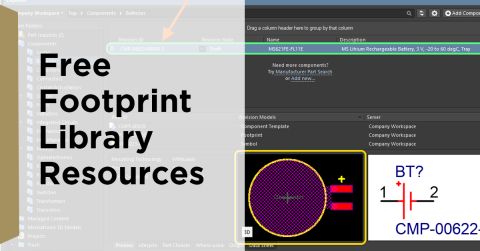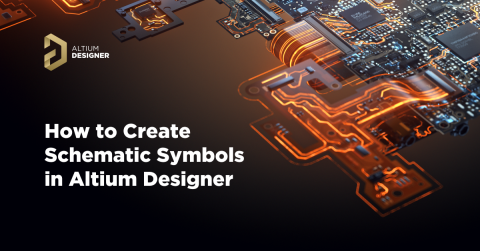Beyond the Datasheet: Real-World Testing of Voltage Regulators

Lately, I've been working hard to test various electronic components. You're probably asking yourself why I don't just read the datasheets and save time and money. The answer is that datasheets, more often than they should, don't contain all the details you might need to select wisely for your specific use case. Alternatively, the datasheet might present a component more favorably than its real-world performance. I want to know how my component choices perform in real-world testing for the projects I make and build.
In a previous post, I highlighted the Top 10 Switching Regulator Modules that made it through my testing process. This time around, I will tell you how the linear voltage regulators I tested performed.
Linear Regulators vs. Switching Regulators
How Linear Regulators Work
Linear voltage regulators provide step-down conversion from one voltage to another. Deep beneath their epoxy shell, you'll find a non-inverting comparator input referenced to a specific bandgap voltage, an inverting comparator input that monitors the output voltage, and a transistor connected to the comparator output. As the input voltage varies slightly, the high-gain comparator circuit adjusts the transistor bias voltage, immediately affecting the output voltage and current. In short, linear voltage regulators are exceedingly good at producing a constant output voltage regardless of input voltage. This fast response gives them a very high Power Supply Rejection Ratio PSRR, which makes them perfect for use with sensitive downstream circuits (sensors, ADC, etc.).
But linear regulators aren't perfect, and they aren't nuanced devices. Any difference between the input and output voltage is dissipated inside the regulator as heat. For example, a 5V @ 1A output from a 12V input will produce (12 V - 5 V)*(1 A) = 7 W of heat. 7 Watts of heat energy for 5 Watts of electrical energy isn't a great trade-off.
How Switching Regulators Work
Switching regulators, or switched mode power supplies (SMPS), use high-frequency switching combined with energy storage components such as capacitors and inductors to reduce or even increase the input voltage. Their key feature is efficiency, where linear regulators lose efficiency as the input-to-output voltage range increases; switching regulators can maintain high efficiency over a wide range of voltages and loads.
Switching regulators function by rapidly turning the input voltage to the circuit on and off; by controlling the duty cycle of the (or ratio of on to off time), the output voltage can be adjusted. While the regulator switch is on, energy is stored as a magnetic field in an inductor and is then released to the output as a regulated voltage. The capacitors smooth out this rapidly rising and falling voltage, providing a relatively smooth output. This process greatly increases efficiency compared to a linear regulator as the excess energy isn't bought into the circuit and doesn't need to be converted into heat.
Unfortunately, there are also some drawbacks to this approach. As switching regulators operate cycle by cycle, they can't react to changes in load or input voltage as rapidly as a linear regulator can. They often experience momentary voltage drops or spikes as the load changes. Because the input voltage is connected to the output through an inductor during the 'on' time of the switch, noise in the input supply can make it through to the output far more easily than in a linear regulator. Additionally, the switching action of the regulator introduces its own noise; as the inductor stores and releases energy, a voltage fluctuation occurs at the switching frequency.
As a note, there are multiple switching regulator topologies, so this is a very generic and broad overview of their operation.
Combining Switching and Linear Voltage Regulators
When you have a high-voltage difference between the input rail and output supply and a need for a noise-free supply, you can use an SMPS in series with a linear regulator. The SMPS steps the voltage supply down to a more appropriate input voltage for the linear regulator, which provides a low noise supply line. For example, suppose you have a 3.3 V sensor powered by a 12 V battery. In that case, you might use a switching regulator to drop from 12 V down to 4.5 V and then a linear regulator to go from 4.5 V down to 3.3 V. You can see an example of this in a real-world circuit by checking out my article and video where I built a dual-rail supply from a 9V battery.
Low-Voltage Dropout (LDO)
Physics provides constraints – there's a point at which switchers and linear voltage regulators can no longer function correctly. That point is usually dependent in some way on the current requirements of the downstream circuit. Suppose you plan to have an LDO linear regulator provide a steady voltage to a device, such as a microcontroller, from an upstream source with a decreasing voltage, such as a battery. In that case, you'll want to determine where your circuit no longer functions, find a way to sense that voltage, and shut down the circuit before operation becomes unreliable.
Testing Real-World Performance
78L09
I tested five 78L09 type 100 mA regulators from Onsemi, STMicroelectronics, and Texas Instruments. I expected that the parts would be drop-in replacements for one another since they all have identical part numbers (see the results here). And it’s a good thing I did since they certainly don’t all perform equally!
Dropout Voltage
|
Vendor |
MPN |
Avg. Dropout |
|
ON Semiconductor |
1.63 V |
|
|
STMicroelectronics |
1.65 V |
|
|
ON Semiconductor |
1.65 V |
|
|
Texas Instruments |
1.80 V |
|
|
ON Semiconductor |
1.70 V |
The dropout voltage is the lowest input voltage that allows the voltage regulator modules to function as specified. That means for a 9V regulated output, the On Semi MC78L09ABPRAG requires a minimum input voltage that is 9 V + 1.63 V = 10.63 V. There is 170 mV of difference between the dropout voltage of the best and worst parts, the Texas Instruments UA78L09ACLPRE3 requires 10.8 V to function properly. That means that I either need to engineer my solutions for the worst possible part choice, or engineer for the best and accept no substitutions. But either way, I’m leaving something on the table. If I engineer for the worst possible part, I’ll be dissipating extra energy as heat, decreasing my power budget and unnecessarily shortening battery life. If I engineer for the best possible part I could handcuff myself to an added expense, or worse-yet, a part shortage.
If I was working for a company where the purchasing manager said “Is it okay to substitute the 78L09 from Texas Instruments for the 78L09 from OnSemi? It’ll save about $200 bucks overall in the production run.” The answer should be a simple “Yes”, but without testing the alternative part you might find your circuit doesn’t work as expected depending on how tightly you designed around dropout voltage, thermal output, or noise performance.
Efficiency
Checking efficiency at several input voltage points, you could see a 10 to 15 percent difference under very light loads. It might not sound like much, but if you're operating from a battery or have a case that cannot easily dissipate thermal energy into the environment, that slight change could adversely affect the lifespan and duty cycle of your design.
Luckily, by the time we reach these regulators' maximum current ratings, they are all within a few percent of each other. We lose the Texas Instruments component at its maximum rated voltage of 24 V. In comparison, the other four regulators can operate up to 30 volts input.
|
Vendor |
Part Number |
Max Efficiency |
Avg Efficiency |
Avg Efficiency < 280% Input Voltage |
Avg Efficiency < 70mA Load |
Avg Efficiency < 70mA Load & 280% Input Voltage |
Avg Efficiency < 20mA Load |
Avg Efficiency < 20mA Load & 280% Output Voltage |
|
ON Semiconductor |
79.80% |
46.30% |
51.90% |
44.50% |
50.10% |
41.40% |
46.20% |
|
|
STMicroelectronics |
78.50% |
46.30% |
51.50% |
44.60% |
49.60% |
40.90% |
45.50% |
|
|
ON Semiconductor |
72.60% |
38.50% |
50.10% |
36.80% |
47.90% |
33.90% |
44% |
|
|
Texas Instruments |
77% |
47.60% |
47.60% |
45.20% |
45.20% |
40.70% |
40.70% |
|
|
ON Semiconductor |
70.90% |
35.90% |
46.70% |
33.20% |
43.20% |
27.90% |
36.20% |
At 11.9V input and 8 milliamps of load, I measured between 6 and 18 millivolts of noise across all the components. By the time we're up to 30 milliamps of load, each of the regulators is within one millivolt RMS noise of each other. Suppose you're powering a low-current and sensitive device like a high-gain amplifier with these regulators. In that case, the difference in noise between the regulators might not be ideal if you switch to an alternative part without testing it first.
While I wouldn't recommend running a linear regulator at the maximum input voltage it can handle, the noise at 30 volts input can vary substantially between the different manufacturers.
So, which regulator should you choose? I wrote a very lengthy SQL query to aggregate all the test data, highlight noteworthy figures, and rank the regulators I tested. The rankings favor a low average dropout voltage, high efficiency, and low noise.
|
Rank |
Vendor |
Part Number |
Output Voltage |
Output Current |
Score |
|
1 |
Microchip Technology |
3.3 V |
0.25A |
2737 |
|
|
2 |
Microchip Technology |
5 V |
0.25A |
2217 |
|
|
3 |
STMicroelectronics |
5 V |
0.5A |
1258 |
|
|
4 |
Texas Instruments |
3.3 V |
1A |
900 |
|
|
5 |
Texas Instruments |
12 V |
1.5A |
833 |
|
|
6 |
STMicroelectronics |
5 V |
0.25A |
704 |
|
|
7 |
ON Semiconductor |
9 V |
0.1A |
605 |
|
|
8 |
STMicroelectronics |
9 V |
0.1A |
468 |
|
|
9 |
onsemi |
12 V |
0.1A |
421 |
|
|
11 |
STMicroelectronics |
5 V |
0.8 A |
-9 |
|
|
12 |
ON Semiconductor |
9 V |
0.1 A |
-25 |
|
|
13 |
STMicroelectronics |
12 V |
0.1 A |
-37 |
|
|
14 |
ON Semiconductor |
5 V |
1 A |
-59 |
|
|
15 |
Texas Instruments |
9 V |
0.1 A |
-78 |
|
|
16 |
ON Semiconductor |
5 V |
0.5 A |
-117 |
|
|
17 |
Texas Instruments |
5 V |
0.8 A |
-129 |
|
|
18 |
ON Semiconductor |
5 V |
0.5 A |
-131 |
|
|
19 |
ON Semiconductor |
12 V |
1 A |
-189 |
|
|
20 |
Diodes Incorporated |
5 V |
1 A |
-217 |
|
|
21 |
onsemi |
12 V |
0.1 A |
-241 |
|
|
22 |
Micro Commercial Co |
5 V |
1.5 A |
-268 |
|
|
23 |
ON Semiconductor |
12 V |
1 A |
-274 |
|
|
24 |
Diodes Incorporated |
5 V |
0.1 A |
-299 |
|
|
25 |
NJR Corporation/NJRC |
5 V |
0.5 A |
-317 |
|
|
26 |
STMicroelectronics |
12 V |
0.5 A |
-425 |
|
|
27 |
ON Semiconductor |
9 V |
0.1 A |
-455 |
|
|
28 |
STMicroelectronics |
5 V |
1.5 A |
-593 |
|
|
29 |
STMicroelectronics |
5 V |
0.5 A |
-654 |
|
|
30 |
STMicroelectronics |
12 V |
1.5 A |
-677 |
|
|
31 |
Texas Instruments |
5 V |
0.1 A |
-880 |
|
|
33 |
STMicroelectronics |
12 V |
1.5 A |
-983 |
|
|
34 |
NJR Corporation/NJRC |
12 V |
0.5 A |
-1060 |
|
|
35 |
Diodes Incorporated |
3.3 V |
0.15 A |
-1110 |
In positions one and two, we have the Microchip MCP1700 and MCP1702. I tested these in their 3.3 and 5-volt variants, respectively. These regulators have some of the lowest voltage dropout of all the regulators I tested, leading them to rank very well. Their noise performance is also excellent, but, as with the switching regulators we looked at last time - they do need a minimum load for stable operation; it just happens to be much lower than their switching counterparts.
The noise data was collected with my Rigol MSO5000 series scope, which has a relatively high noise floor. In the future, I plan to retest all the regulators with my Rohde and Schwarz MXO44 or Keysight MXR, which have far lower noise floors.
Efficiency is the other key parameter for ranking, and the Microchip MCP1700 series performs very well... for linear regulators. The efficiency charts clearly show the linear relationship between input voltage and efficiency.
Next in the rankings, we have the STMicroelectronics LF50CV, a five-volt half-amp regulator. The chart might make it look like the dropout voltage is higher than the MCP1702 five-volt regulator. However, this regulator can provide double the current - at the 250mA max of the MCP1702, the LF50CV is a slightly better performer for dropout. Efficiency-wise, it's pretty much the same as the MCP1702, which we expect.
The noise data is quite similar to the dropout data. Just looking at the chart makes it appear that the LF50CV is far noisier, but it's more a case of the trend continuing to double the load. For example, with an 8-volt supply and 250mA load, the MCP1702 has 3.79mV of RMS noise, whereas the LF50CV is 3.46mV at 270mA of load.
Moving on to the Texas Instruments LM3940IT one amp, 3.3-volt regulator - the voltage dropout is slightly better than the MCP1700. Things get pretty interesting looking at the efficiency chart. The light load efficiency of this regulator drops off sharply, the first of the regulators we've looked at to show this steep drop-off. Overall, it's a few percent less efficient than the MCP1700 once the efficiency reaches a linear point.
The noise of the LM3940IT is also interesting, though I suspect I know why. Overall, the noise performance is exceptional and very stable at extremely light loads. I expect the big bumps in the chart are measurement errors - specifically, the regulator starting a thermal shutdown. I have each of these regulators attached to an enormous heatsink with high-performance thermal paste and fans on both sides... but it's still not enough to shift heat out of the package for some components. The LM3940IT's average noise across all voltages and loads is the best of all the regulators tested, even with these odd noise spikes.
In fifth place, but far from the bottom of the rankings, is another Texas Instruments part, the TL780-12KCS. This is a 1.5 amp 12-volt output regulator. Given the high current and output voltage, I expect a reasonably significant voltage dropout compared to the parts we've already looked at. The data does not disappoint - with a 1.5 amp load, you'll want to give this regulator at least 15 volts to give a little margin for variance between parts. With that load, you'll need to handle 4.5 watts of waste heat! Unsurprisingly, the regulator went into thermal shutdown when supplying a 1.5 amp load from a 30-volt input. Still, it was not the earliest to hit thermal shutdown during the tests.
Efficiency is what you would expect, besides the sharp drop-off at the lightest loads, just like we saw from the last TI part. This is a very cheap regulator, so I can see why you might want to choose it over a switching regulator - but if output noise is not an issue, then it will probably cost more to have thermal management than to choose a linear regulator replacement style switching regulator.
So let's look at noise because if you are looking at a regulator like this, it's not for its efficiency! There's a slight instability under the lightest loads, but that quickly disappears. Its noise performance is relatively consistent across its full load range.
To wrap up our exploration of linear regulators, let's circle back to the central question: when should you use a linear regulator over a switching one? As we've seen, the answer hinges on a balance between efficiency, noise, and thermal management. Linear regulators are the go-to choice for applications where low noise is crucial, particularly in sensitive analog circuits. However, their efficiency drawbacks, especially under higher loads and significant input-to-output voltage differences, cannot be ignored.
The journey through these 35 linear regulators has revealed a fascinating landscape of performance variances. Even within the same family of components, we observed differences that could significantly impact your project's performance and design considerations. This underlines the importance of real-world testing and not relying solely on datasheet specifications.
Whether you need to build reliable power electronics or advanced digital systems, use the complete set of PCB design features and world-class CAD tools in Altium Designer®. To implement collaboration in today’s cross-disciplinary environment, innovative companies are using the Altium 365™ platform to easily share design data and put projects into manufacturing.
We have only scratched the surface of what’s possible with Altium Designer on Altium 365. Start your free trial of Altium Designer + Altium 365 today.




